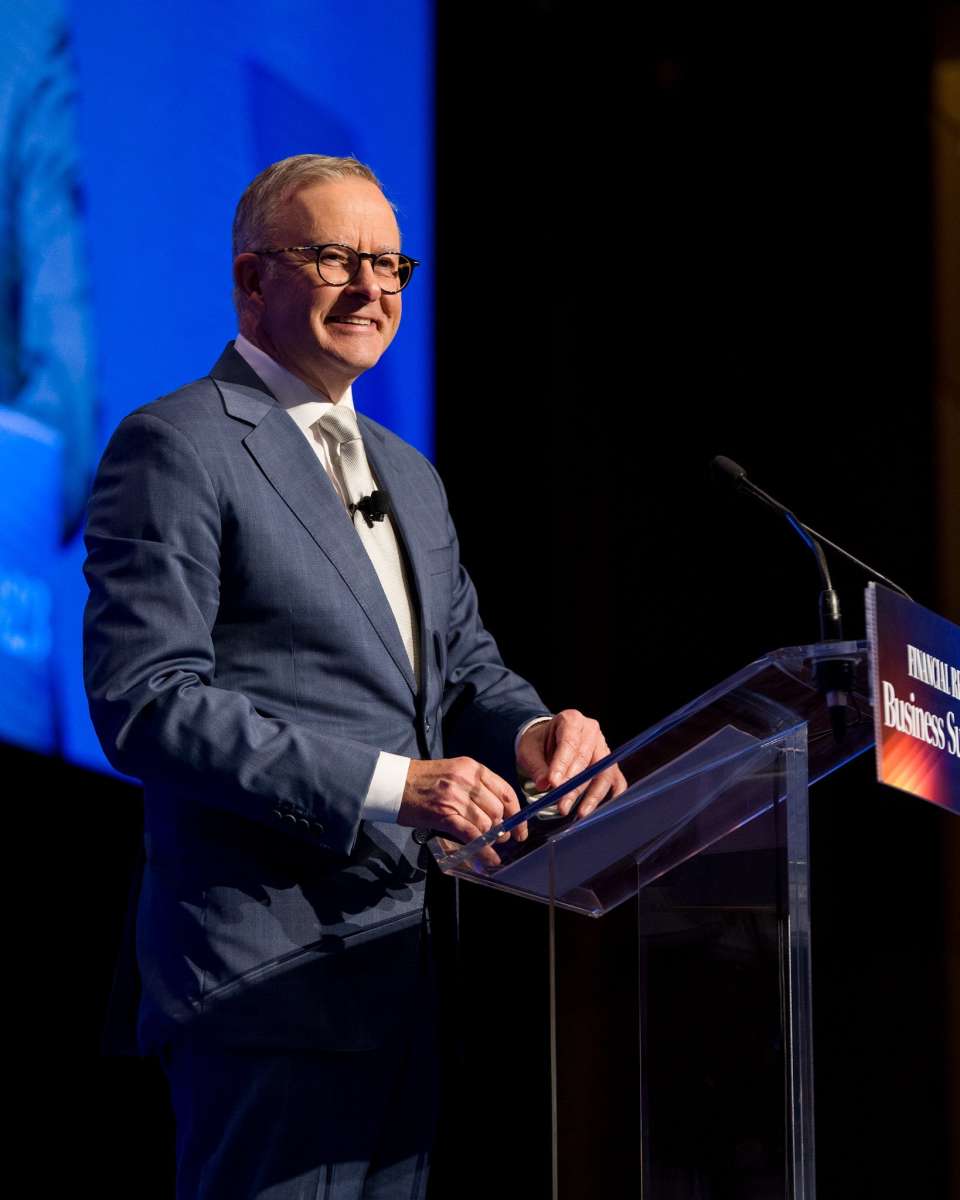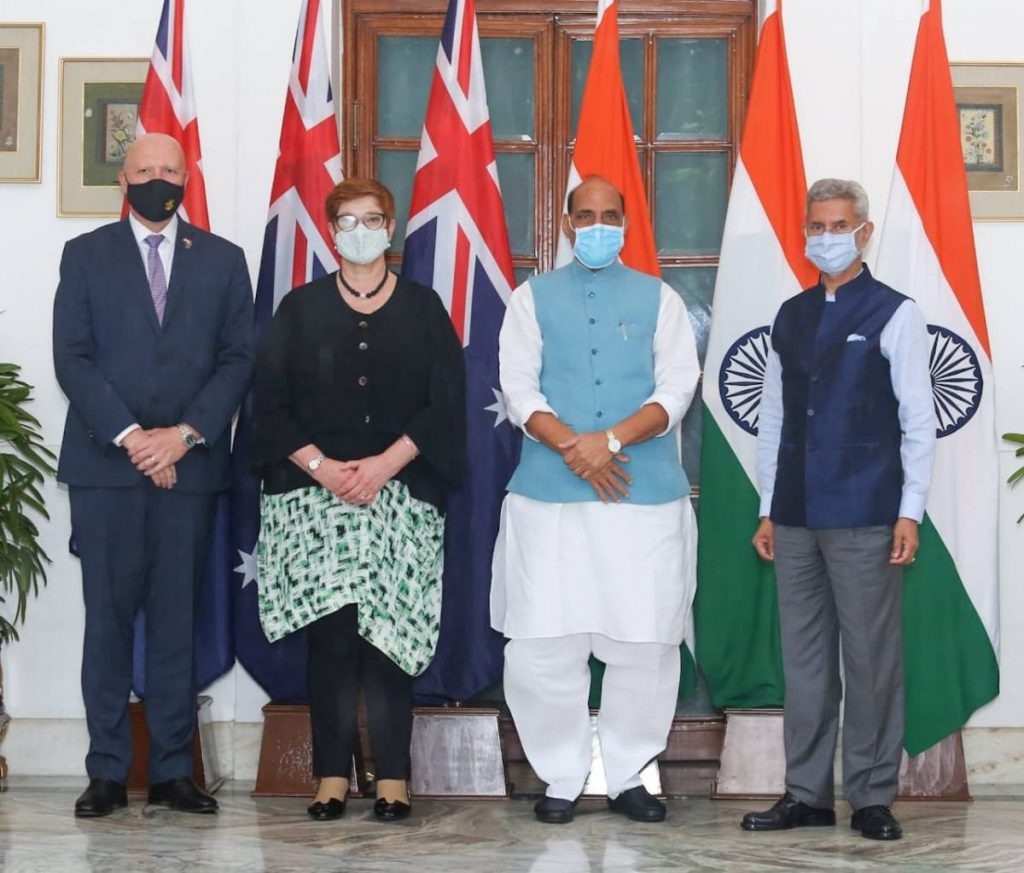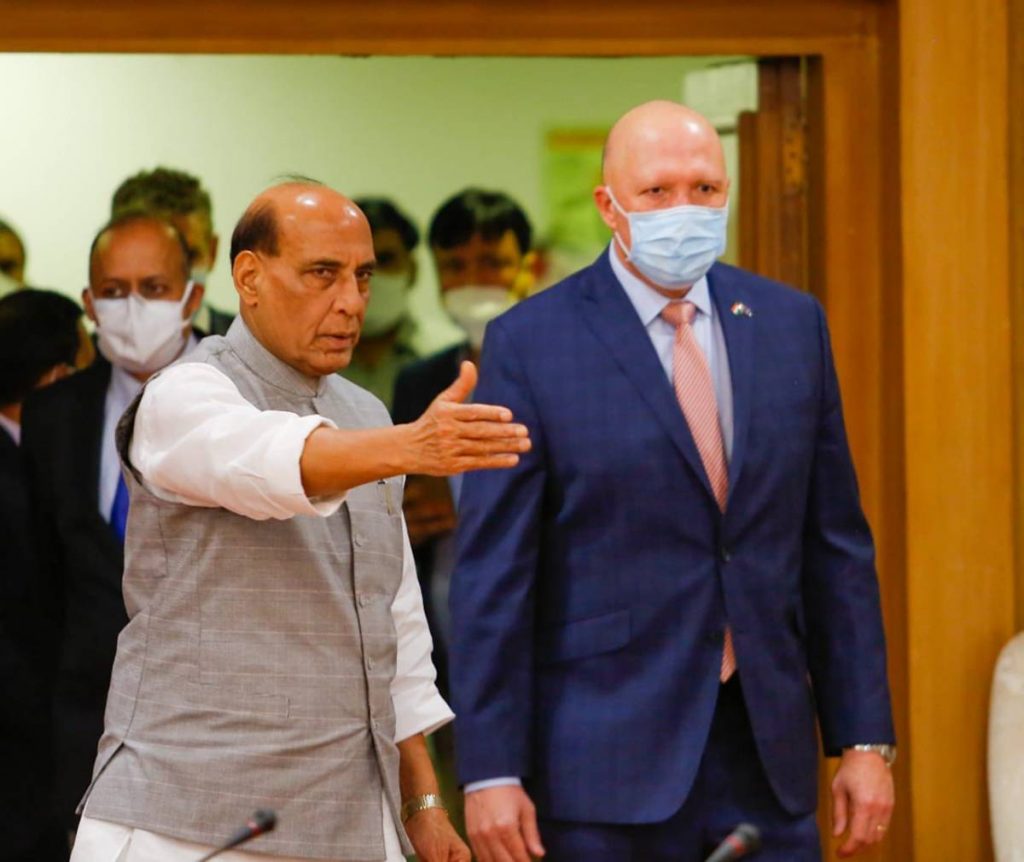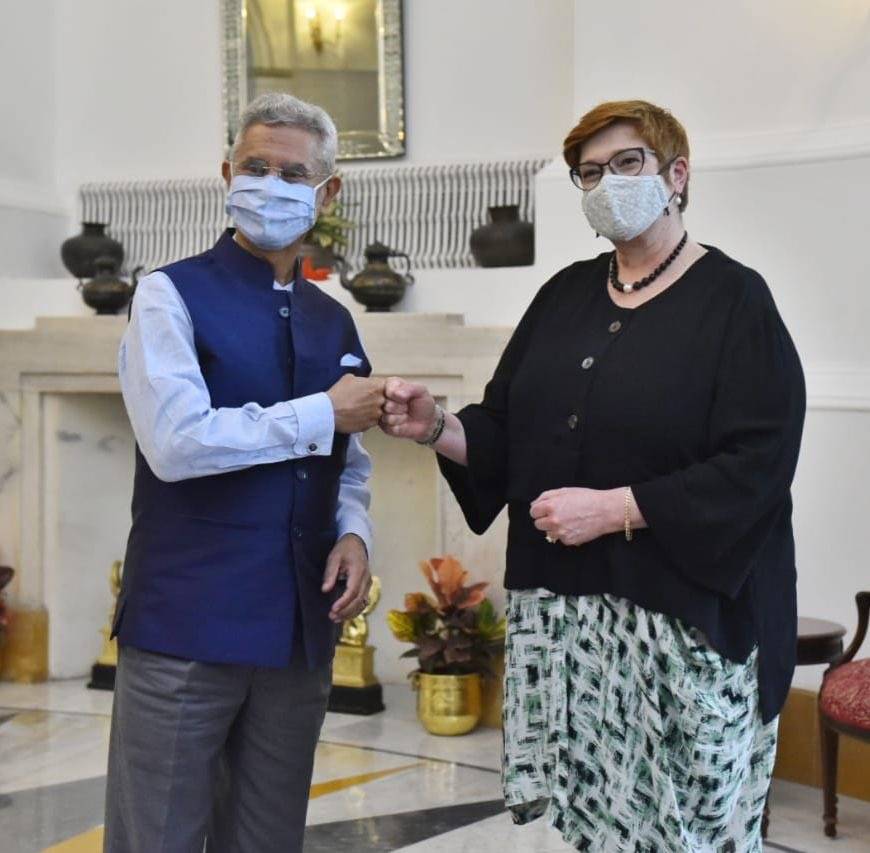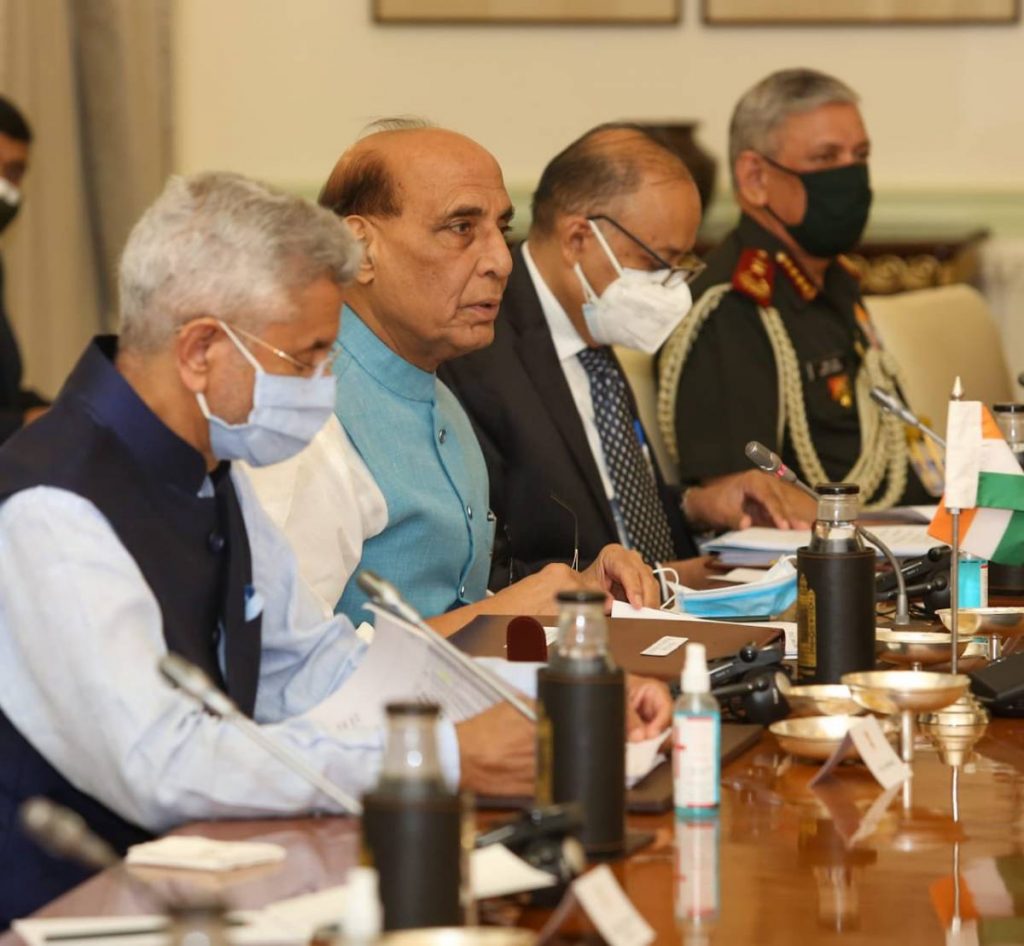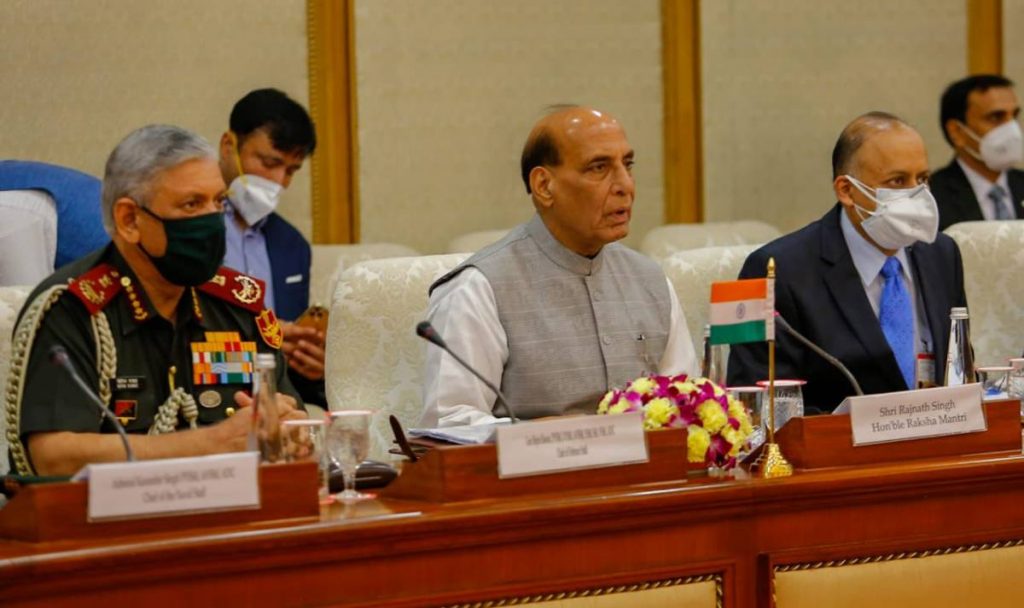Trade ministers of India and Australia are committed to speed up the negotiations.
During the meeting of joint ministerial commission between Union Commerce and Industry Minister Piyush Goyal and his Australian counterpart Don Farrell on Saturday, both India and Australia have committed to conclude the negotiations for expanding the scope of existing free trade agreement by the end of 2023. Both countries also decided to aim to push bilateral trade to USD 100 billion.

Australia’s Minister for Trade and Tourism Don Farrell, who is accompanying Australian Prime Minister Anthony Albanese on an official visit here in New Delhi, said that the two countries “can achieve” this target. Last year, on December 29, India and Australia implemented an economic cooperation and trade agreement (ECTA) and are now negotiating to expand its scope for a comprehensive economic cooperation agreement (CECA).
“ECTA was the first stage of our economic engagement. We are now entering into phase-2 of our discussions where we are looking at much wider ambit of subjects and taking this into a CECA,” Goyal told reporters during a joint press conference here.
Both the ministers have expressed “unhappiness” towards the trade negotiators and said they “will be much more ambitious and aim for a USD 100-billion trade between the two economies”, he said.
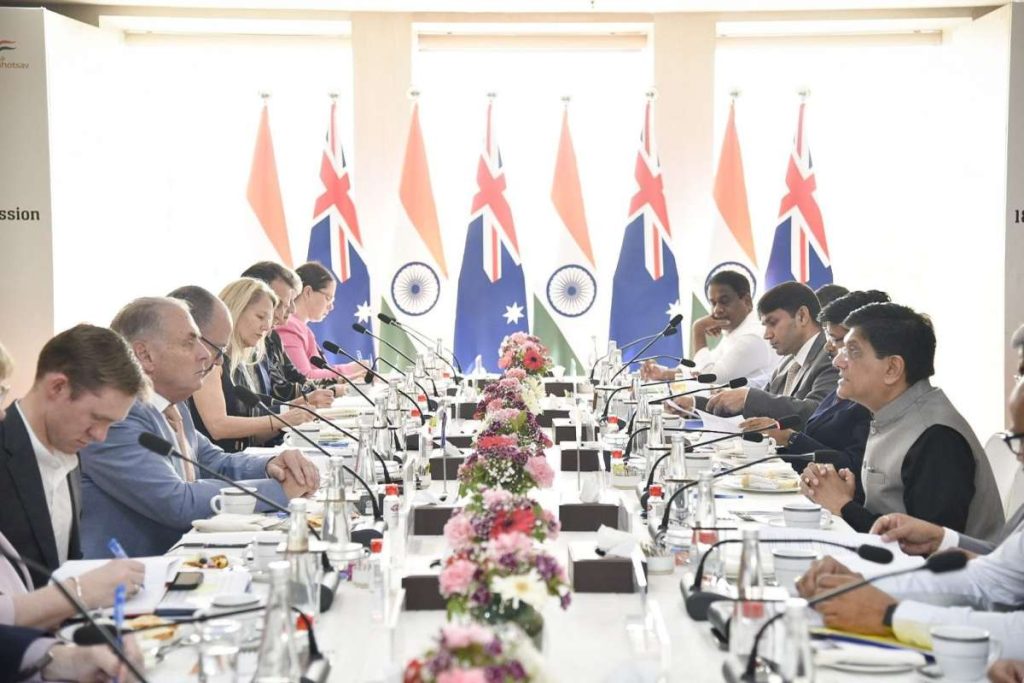
Farrell said that the two countries “can achieve” this target.
On the deadline to conclude the CECA negotiations, Goyal said that though anything done with a deadline is always “dangerous” as “you may land up making mistakes”, but “we” must do things fast.
Both the trade ministers, he said, are committed to speed up the negotiations.
Both the prime ministers have “collectively tasked us to work towards closing the CECA negotiations within this calender year. We would love to do that. We would work to engage in a same spirit as ECTA and hope for quick outcomes without compromising on its quality,” Goyal added.

He also said that “we are very very dissatisfied” with the USD 30-billion bilateral trade and the officials of India and Australia have kept a target of USD 45-50 billion in the next five years.
Goyal said huge opportunities are there to increase cooperation in areas like education, technology, audio-video services and sports.
While Australia has some “very” fine technologies, best of education institutes and sports, India can offer in terms of its talent pool, manufacturing base and startup ecosystem, he said.
On increasing agri trade with Australia, the Indian commerce minister said that there are several areas of mutual interest, which are under consideration of agriculture ministries of both sides to resolve sanitary and phyto-sanitary (related with plans and animals) problems.
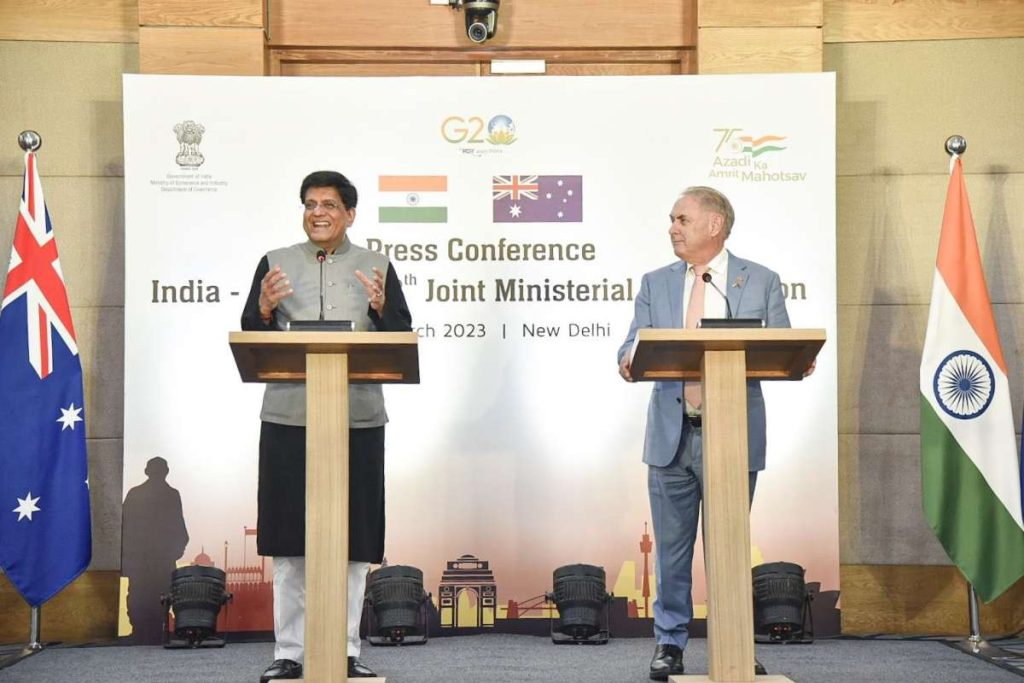
After the first India-Australia summit talks here on March 10 on a range of key issues, Albanese has said that both countries are looking at firming up the ambitious CECA by 2023 while a joint statement mentioned that the two prime ministers tasked the concerned officials to expedite the conclusion of a Migration and Mobility Partnership Arrangement (MMPA) within the next three months.
Goyal appreciated Australia for taking care of Indian sensitivities in the agri and dairy sectors where small and marginal farmers are involved.
“We are looking at win-win opportunities in many areas which will open up a lot of potential like in space technology, Australian education systems and critical minerals, energy storage system that are developed in Australia and sports…Our focus has been leveraging on each other’s comparative competitive advantages to add to trade,” he added.
Farrell said that Australia has all the critical minerals to build batteries for electric vehicles.

He also said that in the first month of the ECTA, Australia has shipped goods worth USD 2.5 billion to India.
Farrell added that Australian wine industry can come to India and provide support to the sector here in terms of sharing knowledge and quality.
“I do hope that in the months to come we will be able to send our teams from India from the wine sector and will be able to invite teams from Australia coming in forging alliances with mutual cooperation,” Goyal said.
Goyal added that India can learn different water sports from Australia as it has a long coastline.
On whether Australia is looking to include gender and sustainability issues in the CECA, Farrell said that the country is looking at these issues as part of the CECA.
Goyal said that India is open to negotiations and look to engage with the rest of the world from a position of strength and learn from the best practices. (ANI)
ALSO READ: India, Aus celebrate 75 years of cricket friendship


